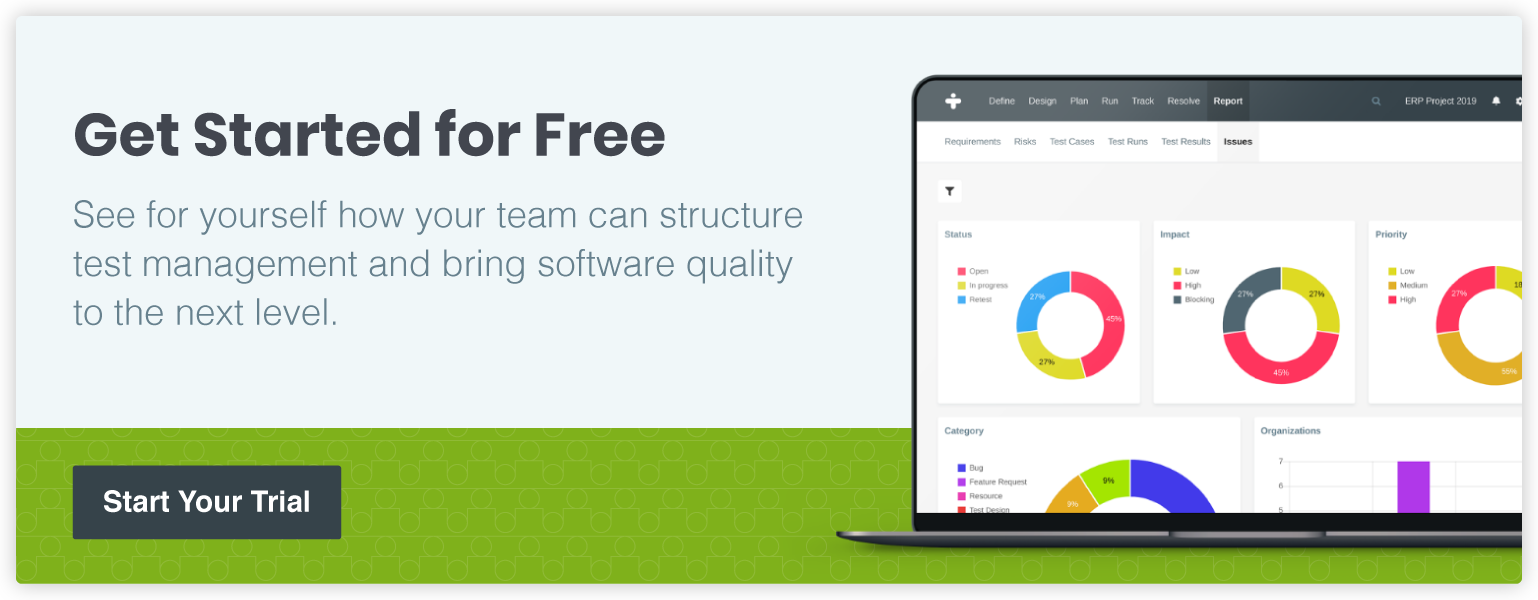Test Design Techniques Manual Software Testers Need to Know
Even if your team is fully onboard with investing in software testing, the realities of budgets, schedules, and resource availability still means it can be difficult to evaluate every aspect of your software design.
That’s where test design methodologies come into play.
Using a test design methodology is a way to create fewer, more robust tests while ensuring broad requirements coverage. Testing methodologies can also help introduce the consistency your organization needs to produce secure, fit-for-purpose software.
So what are some of the common test design methodologies, and how can your team put these techniques into practice? Let’s dive in.
Why Is Proper Test Design Important for Your Software Testing?
Before we dive into specific test design methods, it's important to have your team on the same page about what test design is and why it is key to effective software testing.
Test design happens at the beginning of the quality assurance (QA) process or prior to each test run. At this stage, testing teams create test scenarios based on functional and nonfunctional requirements, outline the structure of testing to be conducted, and begin to organize the testing schedule based on approach (i.e., automated, manual, or both).
Test methodologies can be used to make this phase of software testing easy by ensuring teams follow best practices, develop consistent test cases, and provide adequate coverage for the testing phase.
5 Test Design Methods and Techniques Your Team Should Consider
There is no one-size-fits-all test design methodology. Instead, your team can move from one to the next based on the type of testing to be performed and the software to be evaluated.
To help your team get started, here are five of the most common test design methods out there:
1. Boundary-Value Analysis (BVA)
A form of black-box testing, BVA relies on the concept that most software errors are caused by issues near the extremes of possible inputs to a given field or function. Instead of just using test cases that represent the most common inputs, BVA also introduces inputs that are found at the “boundaries” of the range of what is possible.
For example, if the range of possible inputs is 0 to 1,000, values such as 0, 999, -1, and 1,001 will be attempted.
2. Decision Table Testing
Also known as a cause-effect table, decision table testing involves documenting each desired outcome and creating a table for all the fields needed to create the expected outcome. This approach helps teams ensure that they identify all necessary variables and conditions needed for the software to perform as expected.
3. Path Coverage
Path coverage is an in-depth analysis of each line of code that creates a module or function and then compares it against the test cases to ensure it meets each possible scenario (or “path”).
4. Error Guessing
This test design methodology relies on the software testing team having experience with the types of errors that could be present in the underlying code. Testers use their experience to guess the potentially problematic parts of the software and then design test cases to match.
5. Exploratory Testing
Exploratory testing is more of a philosophy than a structured test design process. With this approach, testers rely on hands-on evaluation and “exploration” of the software without formal test cases. Testers evaluate, test, and check functionality on the fly, trying to replicate the actions end users would make. Specific tests and results are still recorded when done.
Take Your Test Design to the Next Level
No matter what test design approach your team utilizes, having a test management tool that makes it easy to create, store, track, and sequence test runs is vital to keep your team on track, on schedule, and collaborating, no matter your industry or the size of your portfolio.
In fact, these are the exact features TestMonitor is designed to deliver, created by software testers for software testers. TestMonitor provides an industry-leading, secure, cloud-enabled platform that gives your team the tools they need to elevate software testing.
Are you ready to empower your team to perform more efficient and effective software testing? Get started with a free trial of TestMonitor today.






